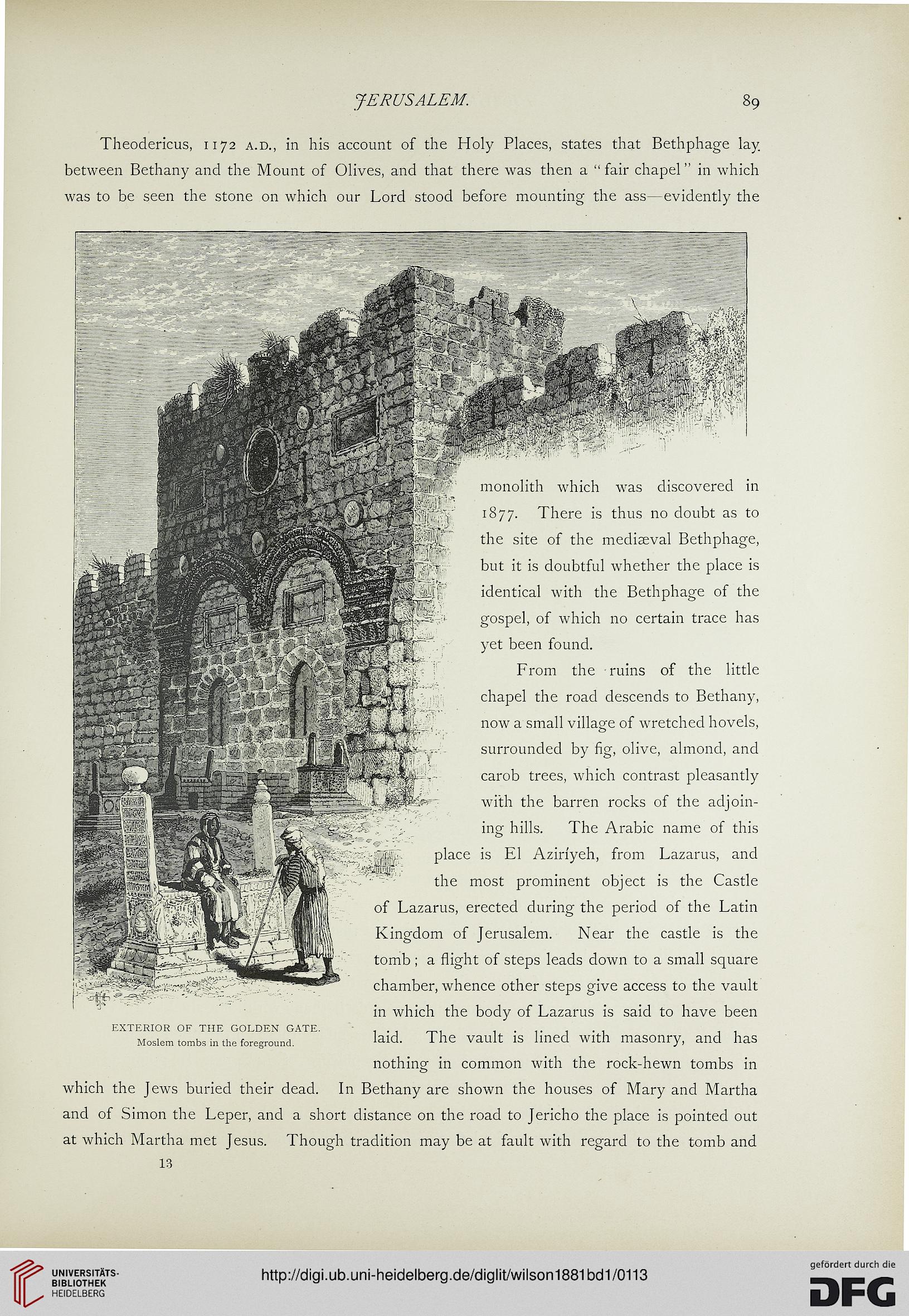JERUSALEM.
89
Theodericus, 1172 a.d., in his account of the Holy Places, states that Bethphage lay.
between Bethany and the Mount of Olives, and that there was then a "fair chapel" in which
was to be seen the stone on which our Lord stood before mounting the ass—evidently the
monolith which was discovered in
1877. There is thus no doubt as to
the site of the mediaeval Bethphage,
but it is doubtful whether the place is
identical with the Bethphage of the
9U gospel, of which no certain trace has
yet been found.
From the ruins of the little
chapel the road descends to Bethany,
now a small village of wretched hovels,
surrounded by fig, olive, almond, and
carob trees, which contrast pleasantly
with the barren rocks of the adjoin-
ing hills. The Arabic name of this
place is El Azinyeh, from Lazarus, and
the most prominent object is the Castle
of Lazarus, erected during the period of the Latin
Kingdom of Jerusalem. Near the castle is the
tomb ; a flight of steps leads down to a small square
chamber, whence other steps give access to the vault
in which the body of Lazarus is said to have been
laid. The vault is lined with masonry, and has
nothing in common with the rock-hewn tombs in
which the Jews buried their dead. In Bethany are shown the houses of Mary and Martha
and of Simon the Leper, and a short distance on the road to Jericho the place is pointed out
at which Martha met Jesus. Though tradition may be at fault with regard to the tomb and
13
EXTERIOR OF THE GOLDEN GATE.
Moslem tombs in the foreground.
89
Theodericus, 1172 a.d., in his account of the Holy Places, states that Bethphage lay.
between Bethany and the Mount of Olives, and that there was then a "fair chapel" in which
was to be seen the stone on which our Lord stood before mounting the ass—evidently the
monolith which was discovered in
1877. There is thus no doubt as to
the site of the mediaeval Bethphage,
but it is doubtful whether the place is
identical with the Bethphage of the
9U gospel, of which no certain trace has
yet been found.
From the ruins of the little
chapel the road descends to Bethany,
now a small village of wretched hovels,
surrounded by fig, olive, almond, and
carob trees, which contrast pleasantly
with the barren rocks of the adjoin-
ing hills. The Arabic name of this
place is El Azinyeh, from Lazarus, and
the most prominent object is the Castle
of Lazarus, erected during the period of the Latin
Kingdom of Jerusalem. Near the castle is the
tomb ; a flight of steps leads down to a small square
chamber, whence other steps give access to the vault
in which the body of Lazarus is said to have been
laid. The vault is lined with masonry, and has
nothing in common with the rock-hewn tombs in
which the Jews buried their dead. In Bethany are shown the houses of Mary and Martha
and of Simon the Leper, and a short distance on the road to Jericho the place is pointed out
at which Martha met Jesus. Though tradition may be at fault with regard to the tomb and
13
EXTERIOR OF THE GOLDEN GATE.
Moslem tombs in the foreground.




